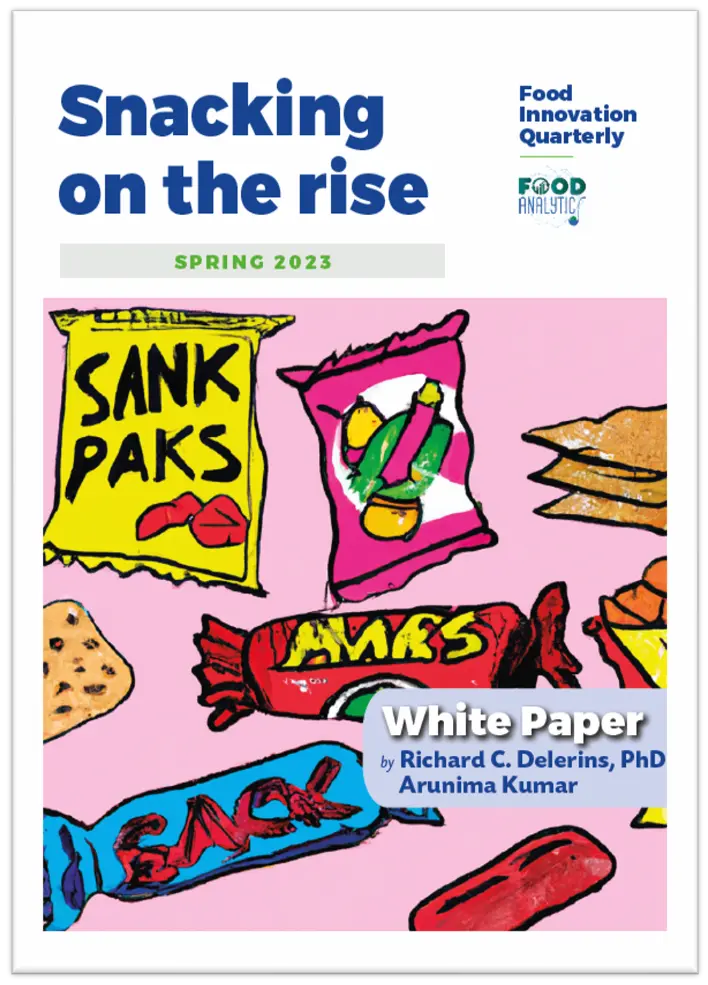A mosaic of influences from far and wide, São Paulo’s, or Sampa’s (as the locals call it) culinary landscape is one of a kind. Here, international cuisines mingle with regional dishes, Brazilian ingredients and local habits to become an eccentric mélange.
Before we bite into the world class food scene of Sampa, let me build some credibility and introduce myself. I grew up in São Paulo and went on to study Food Engineering at the State University of Campinas (UNICAMP). Since I was a teen, food and gastronomy have been two of my biggest passions. Channeling those, I built a career in food science. For almost a decade now, I have been working with taste and flavours. I moved to Europe in 2006 and have had the chance to travel a lot around the world since. So, I, like a stereotypical foodie, take all opportunities abroad to taste local food, explore new concepts and embark upon the next food adventure.
Expats & Immigrants: Bringing heritage, birthing fusion
São Paulo is a country within a city. Apart from being Brazil’s financial, industrial, and cultural epicenter, Sampa is the perfect destination for ‘culture vultures’: the city has something to enthrall every taste and traveler. With a wide array of impeccable restaurants and cuisines to choose from, ‘Eating out’ is recognized as the ‘top thing to do’ in the city for the visitors. And it is of course part of everyday habits of the Paulistanos – the inhabitants of São Paulo.
In the early 1900s, the city saw explosive population growth in the form of new economic immigrants who primary came from Italy, Japan and the Middle East. The vast number of migrants continued to grow and the most recent decades have seen the arrival of the Chinese, Koreans, Peruvians, Bolivians and West Africans. The immigrants continue to come in waves and leave an impact on this bubbling melting pot of cuisines. They bring their own legacy and merge their food identity with the local Brazilian ingredients creating a kaleidoscopic diversity of novel dishes.
Italy x Brazil
As a result of this heavy international influence, the food I grew up with is not what one would instinctively associate with Brazil: Pizza is one of the most renowned dishes of São Paulo, probably the most famous one at the country level too. The ‘Brazilification’ of Pizza, as I like to call it, is the amalgamation of the Italian version with common local ingredients such as palm hearts, requeijão or catupiry (typical Brazilian spreadable cheese invented by Italian immigrant Mario Silvestrini in 1911), dried salted meat, Biquinho pepper. We even have sweet ones with dulce de leche, chocolate, guava paste and fresh cheese.
Whether savoury or sweet, pizza in São Paulo reaches the limit of creativity. Pizzerias are spread all over the city, but the most famous ones are in big colonial-style buildings of the neighborhoods historically populated by Italian immigrants, such as Bexiga, Bras and Mooca. One of the pizza chains I like the most is 1900 Pizzeria. With a rather broad menu, it is present in several neighborhoods and was founded in the early nineties (same year when I was born!).
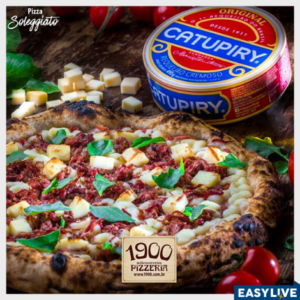
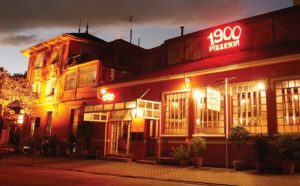
Lebanon x Brazil
As a kid, I used to love the open esfihas from Habib’s, a national Lebanese-type fast food chain, as popular and widespread as McDonalds is elsewhere. Esfiha is a savoury pastry originally from the Middle East made with ground lamb or beef that was popularized in São Paulo mainly by Lebanese restaurant owners.
Today, we have a large choice of toppings such as sausages, cheese, chicken, spinach on top of the traditional minced beef. It is fascinating to think that esfihas have mingled so well with the local street food of São Paulo – so much so that even Brazilians wouldn’t even know that it was not a local invention. An essential part of my childhood, esfihas are still sold in bakeries or snack bars in two different versions: an open dough layered with a topping or stuffed triangle in a closed dough.
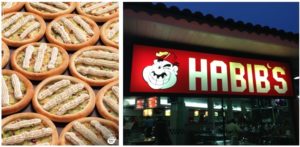
Asia x Brazil
Japanese immigration to Brazil started in 1908 as a replacement for European immigrants to work for the state of São Paulo’s expanding coffee industry. The Japanese migrated to Brazil in family units and formed their own agricultural settlements once they completed their colono (labor contract) and became independent coffee farmers. Today, there are over 2 millions Japanese-Brazilian (the largest Japanese speaking community outside of Japan) most of them living in the states of São Paulo and Parana.
Right in the center of Sampa, there is a notorious Japanese neighborhood, Liberdade, with lots of traditional restaurants, antique shops, book stores and newsstands, where newspapers and comics (manga) all written in Japanese can be easily found. Liberdade is the largest Japanese community outside of Japan, well represented in the architecture and the street design of the neighborhood. The abundance of Asian grocery stores carrying unique fresh or industrial ingredients and spices cater to home-cooks & chefs alike.
The recent arrival of Chinese immigrants, also in Liberdade, has transformed the neighborhood into a mini-Asia of sorts. Not surprisingly, many new authentic Chinese restaurants are popping up in the area. Among those, Chi Fu restaurant is one of the crowd favorites. From the food to the service, with the typical round turning tables and oftentimes, waiters barely speaking Portuguese, a trip to Chi Fu teleports one to China.
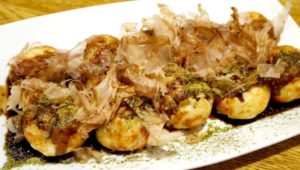

Brazil x Brazil
Being the financial heart of the country, São Paulo also attracted internal migrants. People came from all regions looking for a better life and naturally they brought along their food, eating habits and ingredients. Each region developed its own rooted regional culinary identity within the city. For instance, people from the North brought Amazonian fruits and vegetables which translated into snack bars offering fresh fruit shakes all over the city, all with a huge choice of tropical fruits and countless mixing option.
Today, the most in-demand is a bowl of Açai with Cupuaçu, both typical fruits from the Amazon rainforest. These are particularly loved by athletes, before or after their gym visit. The unique mix of color, taste (earthy, sour, fatty & creamy but also citrusy) and healthy properties keeps everyone coming back for more. My favorite is the Açai bowl with banana and oat flakes!
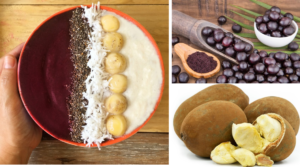
Eating out the Paulistano way
I am always amazed with São Paulo bakeries every time I go back home. Each time, they evolve more and more into a mix of the classic bakery, coffee shop, grocery store, restaurant, and fast-food joints, all in one!
You can choose to simply buy your bread or pastry to take away, or have your coffee on the counter with or without a snack, or sit for a full-fledged breakfast, from freshly prepared hot sandwiches or a savory pastry or even a complete cooked meal for lunch or dinner with rice, beans, meat, salad! And finally, before you check-out, you can do your shopping for groceries, milk, juices, biscuits, cakes… the energy here is palpable. I usually order bread with grilled creamy cheese for breakfast, together with a latte and a fresh fruity juice. Pro-tip, switch regular bread with cheese bread (originally from Minas Gerais, but widely adopted in São Paulo and all over Brazil).
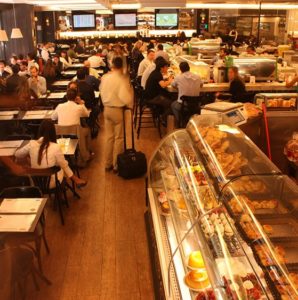
Notably, it is common to have a savoury snack or a sandwich as a delicious option for lunch or dinner, instead of a proper plate of rice and beans – the base of Brazilian cuisine. Particularly in São Paulo, this snacking culture fits well into the rush of a big city and the business mindset. The food establishments have adapted well to the fast-paced consumers.
The hot dog in São Paulo has its own elaborate identity & therefore warrants a special mention. Imagine the classic pillowy bun and in this very order, add- mayonnaise, mustard, ketchup, mashed potatoes, vinaigrette, corn, green peas, sausage, thinly sliced lettuce leaves, and a final touch of crispy bacon, onions and/or shoestring potatoes! The biggest challenge is to eat it without having all the toppings falling down all over you.
Pedrinho Hot Dog holds a special place in my heart. Located in the historical downtown, Pedrinho replaces the traditional bun by a French style baguette and adds a spicy barbecued sausage. For a while, this place was renowned as the best hot dog in São Paulo.
Reinventing commensality: ‘food per weight’ and rodizios
There are two other unique restaurant concepts engrained in the day to day lives of Paulistanos. For everyday lunch, people in the city eat their “food per weight” from an array of buffet that offers everything from salads to meat dishes and side dishes, where one can compose their own plate, and of course find all the variety of national and international foods.
This is a judgment free zone. Everyone decides their own portion size and the composition of their plates: a piece of lasagna with one piece of sushi, rice, beans, a beef stew and seasoned cassava flour and salad, why not? At the end, you pay your bill by the weight of your plate. Oh, how I wish this concept was more widespread outside of Brazil!
Traditionally, a concept catered for meat lovers, in ‘Rodizio’ style restaurants, meats of various types are roasted on skewers then carved directly onto your plate. Rodizio literally means ‘rotation’ or ‘turn’ in Portuguese. The South-American gaucho lifestyle can be accredited with bringing the Rodizio food script to Sampa. At Rodizio restaurants, this ‘grill-to-plate’ meat is eaten along with a central salad and side dishes which one can self-serve buffet style. It is a premium version of the all-you-can eat restaurant, where you can enjoy your favorite meat, degree of doneness and take your time to eat it always at the right warm temperature. Meat rodizios, sometimes alternatively referred to as ‘Brazilian steakhouses’ were probably the first category of Brazilian restaurants to become famous abroad.
True to character, São Paulo pushed the limits on this one. Paulistanos have created rodizios for pizza, pasta, sushi and temaki and even soups or desserts! Pizza is one of my favorites: you can taste a slice of each different pizza, from the oven served directly on your plate at the table. A friendly advice: visit a rodizio when you are not on a diet and have a good appetite!

The streets are calling
In every neighborhood, the street markets still reign for two main reasons: the abundance of fresh fruits and vegetables and, us Brazilians love cooking at home from scratch. We love our fresh & healthy ingredients, and at the same time it is cheaper than eating out. Consequently, the markets are usually crowded and vivacious, full of great options of street food. The most typical thing to do at the end of your shopping is to stop by the pastel stall – a deep fried thin, crispy dough with various savory fillings – and have it with a refreshing, yet very sweet, sugar cane juice with lemon!
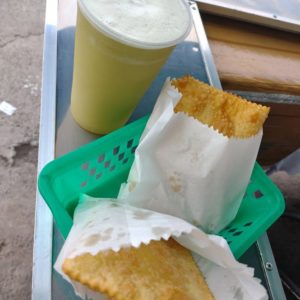
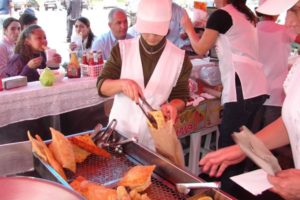
The Municipal Market is a must-see in São Paulo for its choice of fresh groceries and spices as well as its architecture, other than the food stalls of course. Known to the residents as Mercadão (Big Market), it is located at the heart of the historical center of the city. The building is full of stunning stained glass and since the last renovation in 2003, many new restaurants are at the mezzanine.
By far, the most traditional and common food to have there is the mortadella sandwich: freshly baked bread, some melted cheese, and a significant amount of mortadella, in slices to about 4 cm high! Mortadella is originally from Italy, and a classic exemplification of how the gastronomy of São Paulo incorporated a foreign ingredient to the most customary local foods.
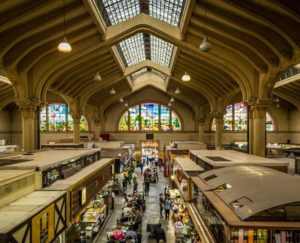
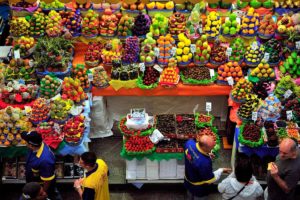
Thus, the composition of São Paulo population is well reflected in the food practices. The local melds with the global through and through. From the street food on-the-go to the high-quality fancy restaurants, both fit well and naturally in the everyday life of Paulistanos. Foodies find São Paulo to be the paradise of choice!
If there is a trend across Brazil or even Latin America, chances are it began here. The Paulistanos are genuine early adopters. São Paulo refrains from tabooing and this is why fusion can peacefully exist here. Deliciousness and convenience take priority over keeping traditional recipes unchanged and these continuous creations turn in no time into a true local invention.





